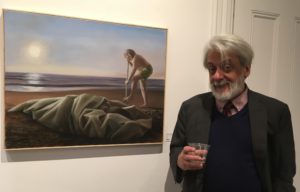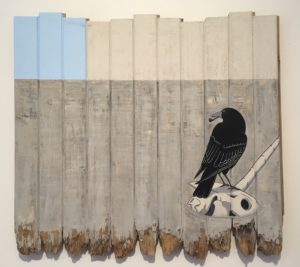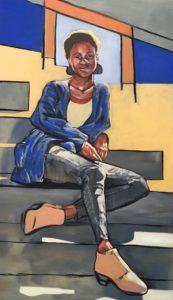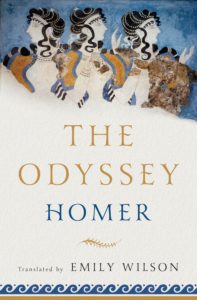This week, I’d like to veer slightly off course to think about literary tropes rather than epic structure. Books 13-16 are very satisfying in terms of plot development: we get to see Odyseeus and Athena making their plans and then Odysseus and Telemachus reuniting. We get a lot of important exposition/backstory about where Odysseus’s father is, where Odysseus hid the Phaiacian treasure, how the suitors were foiled by Telemachus’s return from Sparta. There’s an exciting, anticipatory sense of building tension in these books. The feeling is like that of an action movie right before the big heist or the big mission — except Homer invented that feeling and our contemporary film directors just try to recreate and build upon it.
So instead of thinking about plot development or structure, I want to call your attention to what literary critics call the “epic simile,” which is basically an extended comparison using like or as. Homer uses them frequently throughout both Iliad and Odyssey (so they are also referred to as “Homeric simile”). One of the most famous from the Odyssey occurs as Odysseus comes out from hiding to present himself to Nausicaa, the Phaiacian princess:
……And out he stalked
as a mountain lion exultant in his power
strides through wind and rain and his eyes blaze
and he charges sheep or oxen or chases wild deer……
(Fagles VI.142-145)
The “as” in l.143 triggers your awareness that we’re heading into an epic simile, wherein the lion is powerful, blazing, driving — but Odysseus is as well, thanks to the power of the comparison.
Odysseus and Telemachus are similarly compared to other wild animals during their reunion in Book XVI:
[They] wailed with cries as shrill as birds, like eagles
Or vultures, when the hunters have deprived them
Of fledglings who have not yet learned to fly
(Wilson XVI.217-219)
This simile is incredibly nuanced and interesting in that it compares Odysseus and Telemachus to birds of prey, but also shows those birds in time of weakness, when “hunters” (humans? or other animals?) have raided their nests and taken their young. The comparison thus presents the father and son as simultaneously powerful and vulnerable.
One final literary observation about this week’s section: did you note that our narrator refers to Eumaeus the swineherd in the second person? Eumaeus (and no other character in the epic) is defined as “you.” Fagles states: “‘Good news,’ you replied, Eumaeus, loyal swineherd” (XIV.192, with a very similar line at XIV.408); Wilson tells us that “You answered him, swineherd Eumaeus” (XIV.166). Much critical ink has been spilled about this point, of course. It creates something of meta-fiction, another layer of narrative structure, that the poet is speaking to an audience of one (Eumaeus) and the rest of us are just pretty much eavesdropping. So the fictively privileged audience member of this heroic, aristocratic epic is an enslaved agricultural worker.
More about slavery — especially Emily Wilson’s extra-textual remarks about it — in the next post. Enjoy the building suspense!





